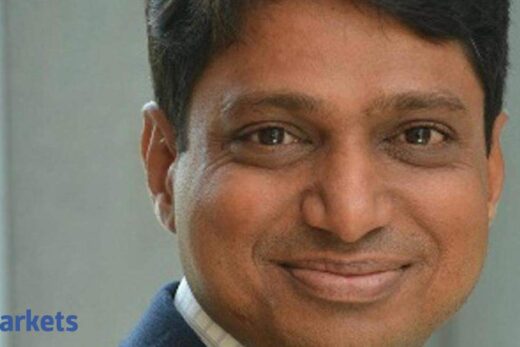The Balanced Advantage Fund is a very unique category. Traditionally, Indian investors have always liked either largecaps or smallcaps but the balanced advantage scheme scheme has mobilised Rs 12,000 crore. When you launched the scheme, were you anticipating this kind of a response?
Honestly speaking, not that much but we were definitely expecting five digit figures, since there is an appetite in the market and people are looking for attractive options with inbuilt solutions. The Balanced Advantage Fund comes in very handy. It is a product as well as a solution built in the product itself. That did the magic because it takes away the navigation from debt to equity and from the hands of the investors to the fund manager. People were looking at tax efficient solutions and that is why people have come from all across the country.
Historically, when mutual funds have gone to the market to raise money via the NFO route, a large amount of mobilisation has happened in the top 25 to 30 cities, not even tier two. It never goes outside 25-30 cities. Have the collections for this product come from outside these 25-30 cities which traditionally have been investing in AMCs?
Yes definitely I mean I am very happy to share with you that we would have got the same money from northeast as we would have got from Mumbai. It has come from across every nook and corner of the country. This is not at all a metro centric fund, but it is the other way round. More money has come from the smaller towns than the bigger cities.
How will investing in the Balanced Advantage Fund be applicable in this environment because interest rates are likely to move higher? So, on the short term paper, one may not get great returns and equity market valuations are also looking slightly stretched.
It should work because we have done a lot of hard work in this and we have created two-three models. We as a fund house are managing more than 300,000 crore of equity assets in our fund house. We have a great team and a bottom up approach. The models tell us how much to put in equity at this point of time. For example, at this point of time, our model is telling us that we should not be more than 30-35% into equities; of the rest, around 35-40% will be in the arbitrage category and around 30-35% will be in the debt. I know it is a challenging time when equities are costly, interest rates are likely to move up and it is very difficult to create a portfolio. But over the medium term and long period, we are very sure we will be able to create value for investors.
The best part about the balanced advantage fund is that you do the job of asset allocation for the retail investors. You mentioned that your model right now indicates that maybe it is time to trim a little bit from equities. What are the parameters in your model that helps you determine how much should be the equity allocation and how much debt allocation?
There are three models working. One is the quant model which tells us how the momentum is going in and the second one is the sentiment index and as for the third model, we are perhaps the first fund house in the country to have created an asset allocation committee, consisting of our CIO as well as our strategist Gaurav Mehta, who has come with the experience of asset allocation funds. We have a committee of four members, which meets every fortnight and decides what should be the asset allocation at this point of time.
What I am telling you about 35% allocation in equities and that too in a mixture of largecaps, midcaps and smallcaps, is arrived at by combining the quant model, the sentiment index as well as the asset allocation committee approach. The Quant model is a typical one. Explaining this model to Sebi itself took various months but that has worked in our earlier avatar of Dynamic Asset Allocation Fund and so I think it should do well. In any case, we have two more models working over and above this and so we should be able to create value for sure.
Right now, your model is indicating that perhaps you should lean more towards the debt side. What would you look at in your debt portfolio?
Immediately it will be on the short term, short duration papers only. Interest rates are likely to move further up from this level. We will not take any duration call but definitely, some portion of it we can put in high yielding papers because over a period of time, that will give higher yields to the portfolios. It will be a mix and match but mostly towards the short-term debt instruments for the time being.
Lot of other AMCs have raised money in the small and the midcap schemes about two-three months ago. Small and midcap stocks have only corrected after that. Do you see there is merit in coming up with NFO or a fresh offering in that space?
I do not think so. Honestly speaking, in any case, in smallcap funds, the opportunities are very limited and with the restrictions which are there. The space itself is very crowded at this point of time. If we have to file a paper or we have to come out with a fund at this point of time, it would not be for a small cap fund.
What kind of innovation should we expect from SBI AMC in terms of new product offerings and schemes? Should we expect anything substantial in the next two-three months?
Not really. In fact, we were not in the Balanced Advantage category because as per Sebi, we can either have dynamic asset allocation or balanced advantage fund. We had a dynamic asset allocation fund but that fund was not clearly telling whether it will be equity category or debt category fund. So the investors at large were looking at something in the equity category. So, we just merged our dynamic asset allocation fund with our debt hybrid fund and came out with this.
In any case, it is a large category. It is already a 1.3 lakh crore category and we are happy that we are entering the category with 10% market share. so That gives us solace. But the basic idea was to take this kind of fund to every nook and corner of the country and get new investors. Our endeavour is always how to create a market. Since we are the leaders in the mutual fund space, we feel that this is our responsibility to create a market and we are very happy.



